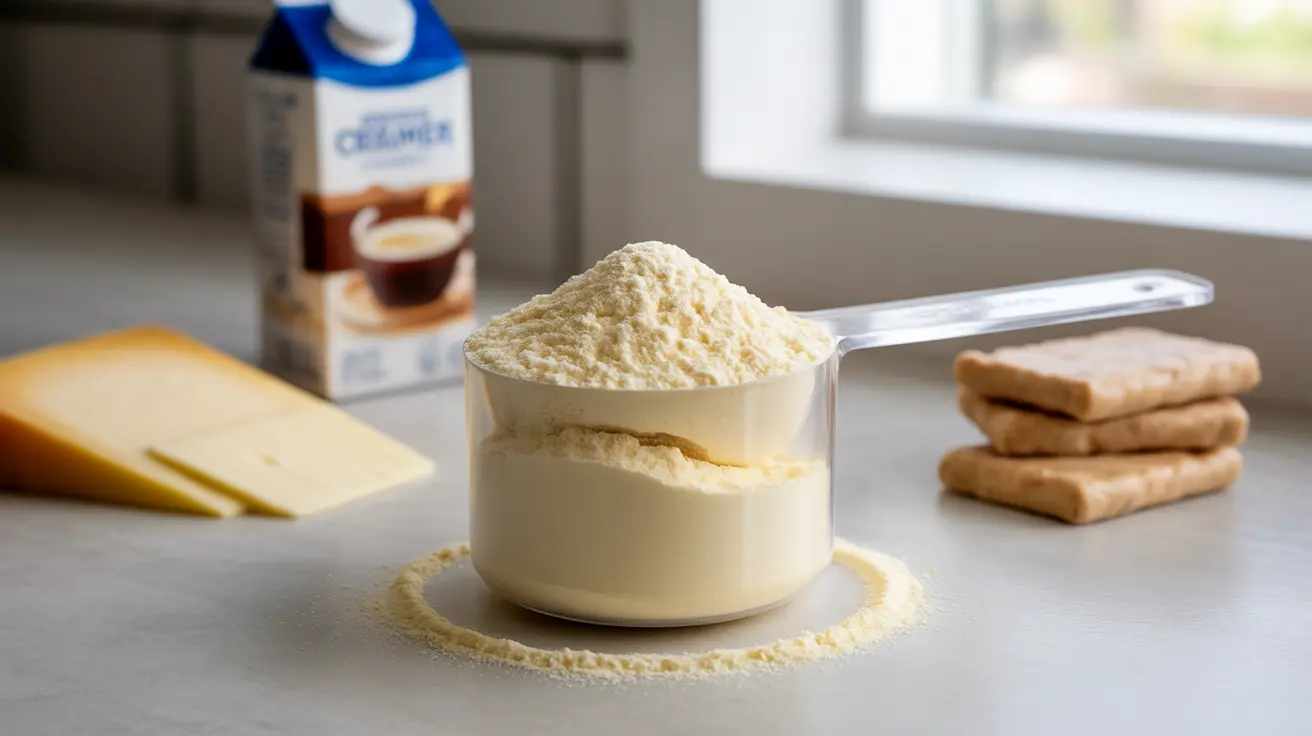Sodium caseinate is a versatile protein derived from milk that plays a significant role in many processed foods and supplements. This sophisticated ingredient is created through a specific process that separates casein (milk's primary protein) from milk and converts it into a more stable, soluble form using sodium hydroxide.
Whether you're examining food labels or considering dietary restrictions, understanding sodium caseinate is crucial for making informed decisions about your food choices. This comprehensive guide will explore what sodium caseinate is, its uses, safety considerations, and important information for various dietary needs.
What Is Sodium Caseinate and Its Production Process?
Sodium caseinate is produced by treating milk protein (casein) with sodium hydroxide, creating a more stable and water-soluble protein ingredient. This process effectively separates the protein from other milk components while maintaining its nutritional benefits. The resulting compound is a white, tasteless powder that's highly valued for its functional properties in food production.
The transformation process involves several key steps:
- Separation of casein from fresh milk
- Treatment with sodium hydroxide
- Purification and filtering
- Drying into a powder form
Common Uses and Applications
Sodium caseinate serves multiple purposes in food production and manufacturing. Its versatility makes it a popular choice for various applications:
Food Products
Common foods containing sodium caseinate include:
- Coffee creamers and whiteners
- Processed cheese products
- Meat products
- Baked goods
- Protein bars and supplements
Functional Benefits
Manufacturers utilize sodium caseinate for several important functions:
- Emulsification of fats and oils
- Texture improvement
- Protein enrichment
- Stabilization of food products
- Enhanced mouthfeel in beverages
Health Implications and Safety Considerations
While sodium caseinate is generally recognized as safe (GRAS) by the FDA, certain individuals need to exercise caution when consuming products containing this ingredient.
Nutritional Benefits
Sodium caseinate offers several nutritional advantages:
- High-quality protein source
- Complete amino acid profile
- Good digestibility
- Low lactose content
Special Dietary Considerations
Important factors to consider for specific dietary needs:
- Not suitable for individuals with milk protein allergies
- May be acceptable for some lactose-intolerant individuals
- Not appropriate for strict vegan diets
- Contains minimal lactose compared to whole milk
Frequently Asked Questions
What is sodium caseinate and how is it different from regular milk protein? Sodium caseinate is a processed form of casein, milk's primary protein, that has been treated with sodium hydroxide to make it more soluble and stable. Unlike regular milk protein, it's isolated from other milk components and modified to enhance its functional properties.
What foods and products commonly contain sodium caseinate and why is it added? Sodium caseinate is commonly found in coffee creamers, processed cheese products, meat products, and protein supplements. It's added as an emulsifier, stabilizer, and protein fortifier to improve texture, consistency, and nutritional value.
Is sodium caseinate safe for people with milk allergies or lactose intolerance? People with milk protein allergies should avoid sodium caseinate as it contains milk protein. However, those with lactose intolerance may tolerate it better than regular dairy products because most of the lactose is removed during processing.
Can sodium caseinate be part of a vegan or dairy-free diet? No, sodium caseinate is not suitable for vegan or dairy-free diets as it is derived from milk. Those following these dietary restrictions should look for plant-based alternatives.
What are the potential health benefits and side effects of consuming sodium caseinate? Health benefits include high-quality protein content and essential amino acids. Potential side effects mainly affect those with milk protein allergies or sensitivities. Most people can consume sodium caseinate safely, but those with specific dietary restrictions should exercise caution.




